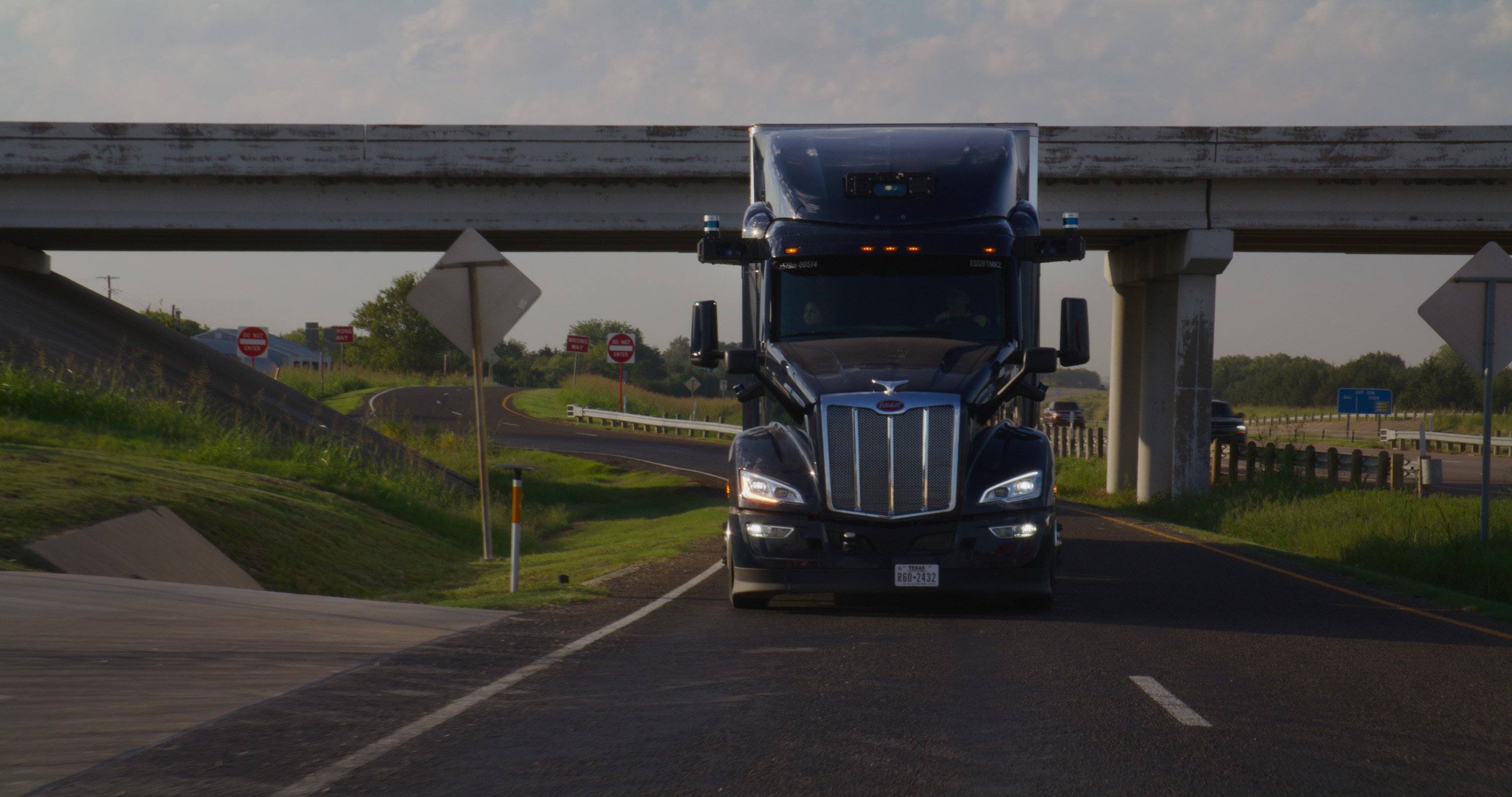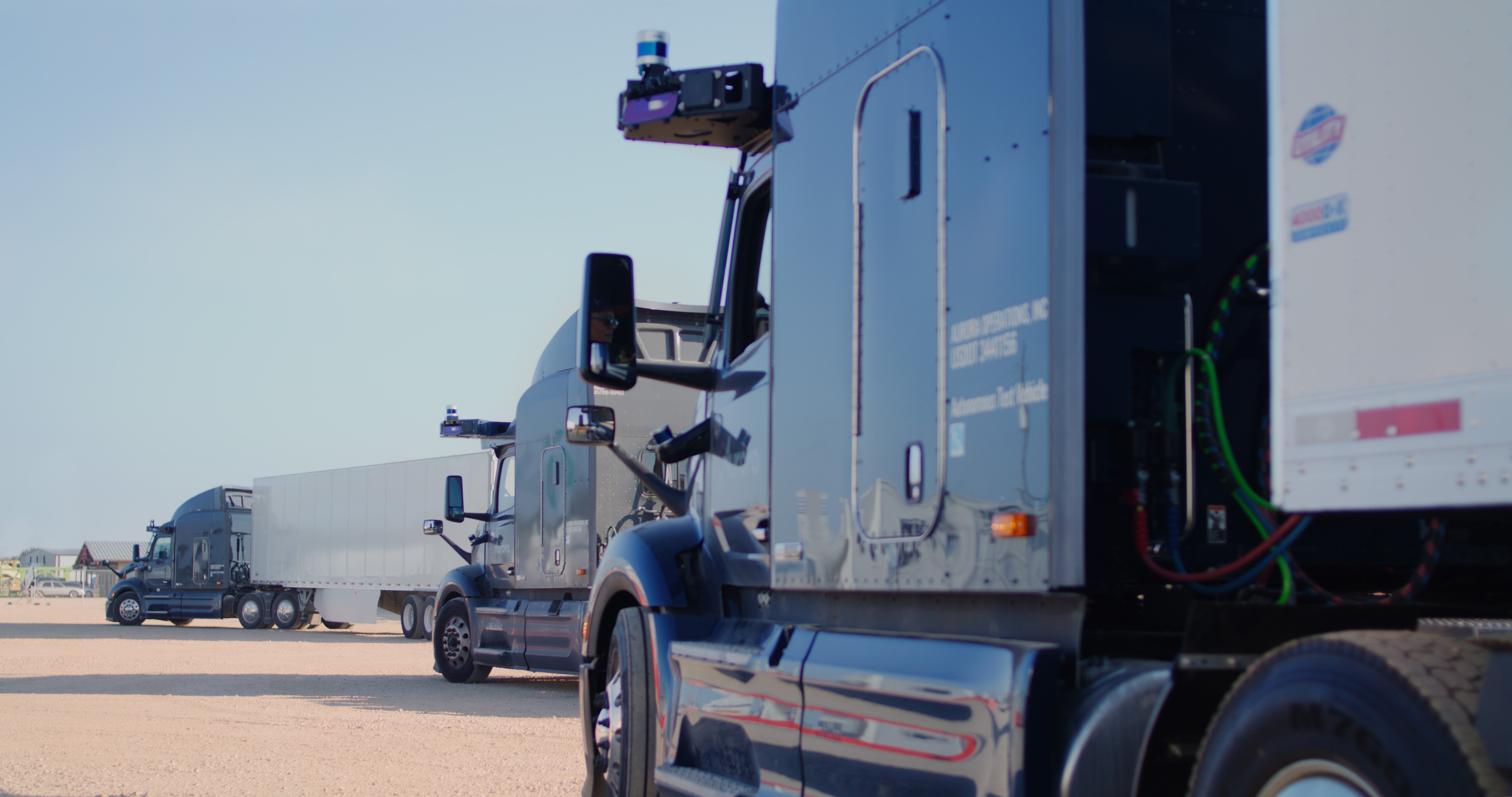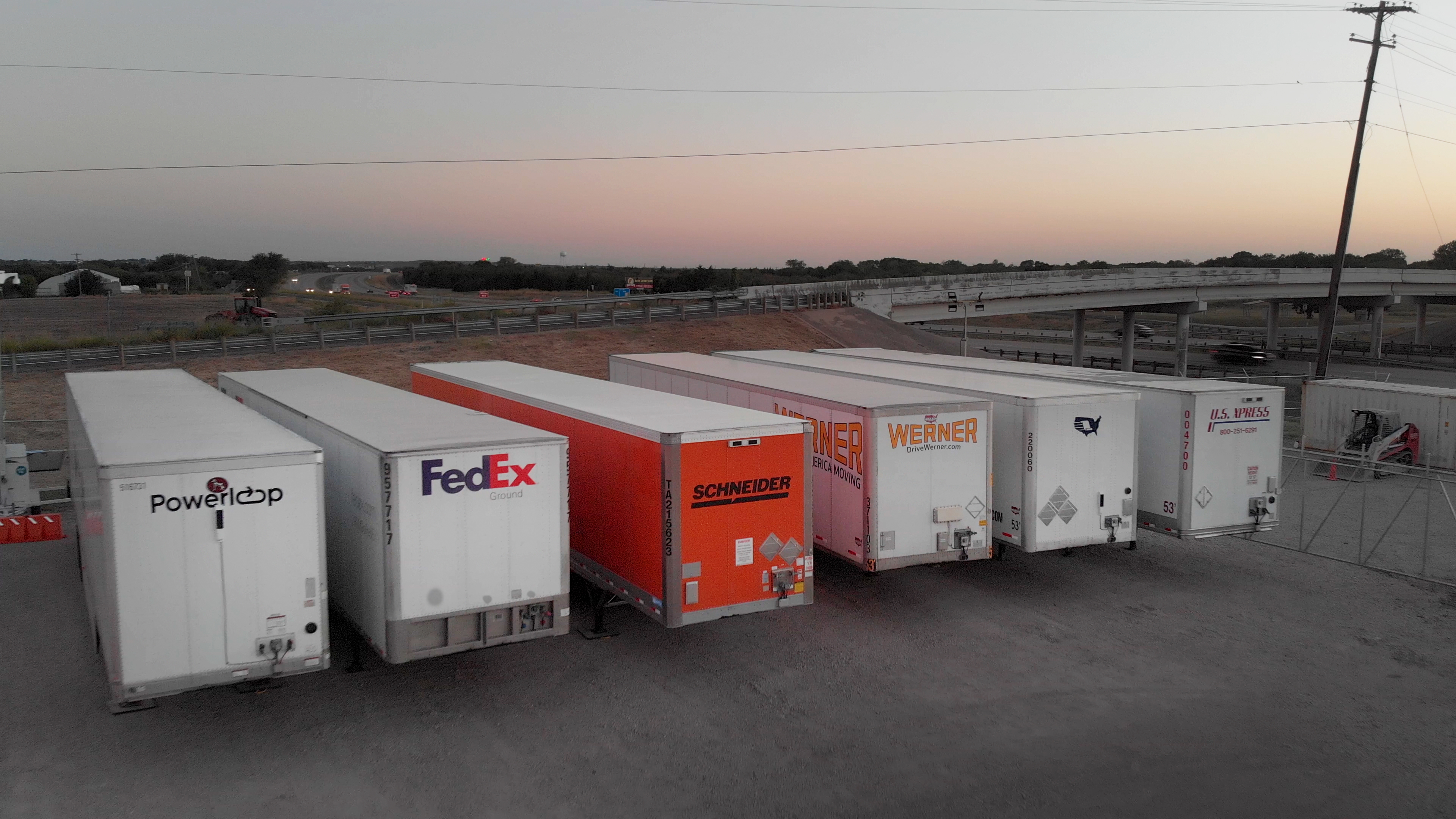2023: The year of self-driving trucks
From our leaders | January 19, 2023 | 4 min. read

Autonomous vehicles are coming off a year full of progress toward commercialization and acceptance:
- Pennsylvania became the latest state to green-light driverless vehicle deployment.
- San Franciscans can now hail a driverless ride across town from two different services.
- Everything from Corona beer to pet food, Girl Scout cookies, and Ikea furniture was transported across the country by autonomous semitrucks. At Aurora alone, we autonomously hauled over 11 million pounds of freight throughout the Lone Star State.
We are entering a new era of expanding availability of commercial self-driving vehicles. Though industry consolidation is likely to continue, 2023 will be defined and led by the companies that made the right technology investments and are executing on viable paths to market with established, enduring partnerships.
Here are a few predictions from Aurora’s leaders on what will inevitably be a critical and thrilling year (and beyond) for AVs.
1. Independent AV companies will be positioned to advance more quickly toward product deployment and profitability.
Independent companies benefit from operational freedom—the ability to focus on what’s best for the company without distraction or competing business priorities. It’s also becoming increasingly clear that independent companies are favored by public officials and regulatory entities, like the DOJ and FTC, to lead the industry.
Look out for: independent companies breaking away from the pack by taking full advantage of their ability to be 100% focused on fine-tuning a product for commercial use. At Aurora, we’ll continue to leverage our ecosystem of close-knit OEM partners and pilot customers—like PACCAR and FedEx and Volvo and Uber Freight—to demonstrate that the Aurora Driver is a safe and reliable product that is designed to drive tremendous value for our customers.
- Richard Tame, Chief Financial Officer

2. Transparency will drive acceptance and keep the U.S. in the lead.
Regulatory momentum is building in the self-driving industry with states like Pennsylvania passing new policies that welcome autonomous vehicle testing and deployment and states like Texas continuing to be pro-AVs. There is also a clear need for the U.S. to maintain its global leadership position in AV deployment. As more legislators learn about the benefits of autonomous vehicles, transparency about the development process and plans for commercialization will build trust and confidence.
Look out for: new AV legislation, led by industry experts like Aurora, that generates confidence in the AV industry and excitement around the safe and responsible deployment of self-driving technology. Ultimately, the companies that openly show how they’re building safe, valuable self-driving products will be the ones that help shape policymakers’ perspectives.
- Gerardo Interiano, VP of Government Relations
3. Technical breakthroughs will catalyze the rapid deployment of autonomous vehicles at scale.
New developments with critical technologies will present a credible path to safely and cost-effectively delivering a reliable product at scale—e.g., tens of thousands of autonomous trucks this decade.
Look out for: key technical advances that accelerate the path to commercialization.
Cutting-edge sensors, like Aurora’s FirstLight Lidar, will get smaller and less expensive, unlocking significant manufacturing gains for autonomous trucks.
- Sandor Barna, SVP of Hardware Engineering
Advances in virtual testing and simulation will allow developers to safely test and validate AV technology in the most dangerous and rare scenarios, paving the way for safe deployment.
- Yanbing Li, SVP of Software Engineering
4. Autonomous trucks will be adopted more quickly and broadly than cars, and that’s a good thing.
Coast-to-coast autonomous trucking will launch via the U.S. interstate system well before autonomous ride-hailing is ubiquitous. Autonomous trucks will pave the way for the scaled deployment and acceptance of autonomous ride-hailing in America.
Look out for: committed truck OEMs, like PACCAR and Volvo, beginning to manufacture next-generation trucks built specifically to be operated by the self-driving systems of leading autonomy developers. Key product milestones, like Aurora Driver Ready, will signal that leading autonomy developers have proven their technology is sufficiently safe for driverless deployment at scale.
- Sterling Anderson, Co-Founder & Chief Product Officer
5. Trucking companies (and their customers) will reap the benefits of autonomy.
Autonomous trucks will provide the logistics industry with a new mode of transportation that moves goods more safely and efficiently than what is currently possible. Carriers will benefit from a new form of consistent capacity that will help them grow their business and operations in a meaningful way.
Look out for: commercially representative autonomous trucking services and operational integrations that pave the way for meaningful supply chain impact. Aurora transported nearly half a million packages last year. This year, we plan to scale to 100+ weekly commercial hauls, autonomously delivering tens of thousands of packages for customers on a weekly basis.
- Lia Theodosiou-Pisanelli, VP of Partner Programs & Operations

Autonomous trucks are practical, much needed, and have the potential to make our customers more reliable and profitable. This year, we’ll be closing in on making commercial driverless trucking a reality.
Don’t miss our next update—subscribe to The Dashboard newsletter for all the latest Aurora progress.
Cautionary Statement Regarding Forward-Looking Statements
This blog post contains certain forward-looking statements within the meaning of the federal securities laws. All statements contained in this blog post that do not relate to matters of historical fact should be considered forward-looking statements, including but not limited to statements regarding: the consolidation of autonomous vehicle companies and the advantages held by independent autonomous vehicle companies; the development, commercialization and customer adoption of autonomous vehicles and related technology and services on the timeframe or scale we expect or at all; the potential of autonomous vehicles to improve value and profitability for customers; our expectations regarding legislative and regulatory developments that impact the autonomous vehicle industry; and expectations regarding deployment, adoption and scaling of ride-hailing autonomous vehicles. These statements are based on management’s current assumptions and are neither promises nor guarantees, but involve known and unknown risks, uncertainties and other important factors that may cause our actual results, performance or achievements to be materially different from any future results, performance or achievements expressed or implied by the forward-looking statements. For factors that could cause actual results to differ materially from the forward-looking statements in this blog post, please see the risks and uncertainties identified under the heading “Risk Factors” section of Aurora Innovation, Inc.’s (“Aurora”) Quarterly Report on Form 10-Q for the quarter ended September 30, 2022, filed with the SEC on November 3, 2022, and other documents filed by Aurora from time to time with the SEC, which are accessible on the SEC website at www.sec.gov. All forward-looking statements reflect our beliefs and assumptions only as of the date of this blog post. Aurora undertakes no obligation to update forward-looking statements to reflect future events or circumstances.
Delivering the benefits of self-driving technology safely, quickly, and broadly.